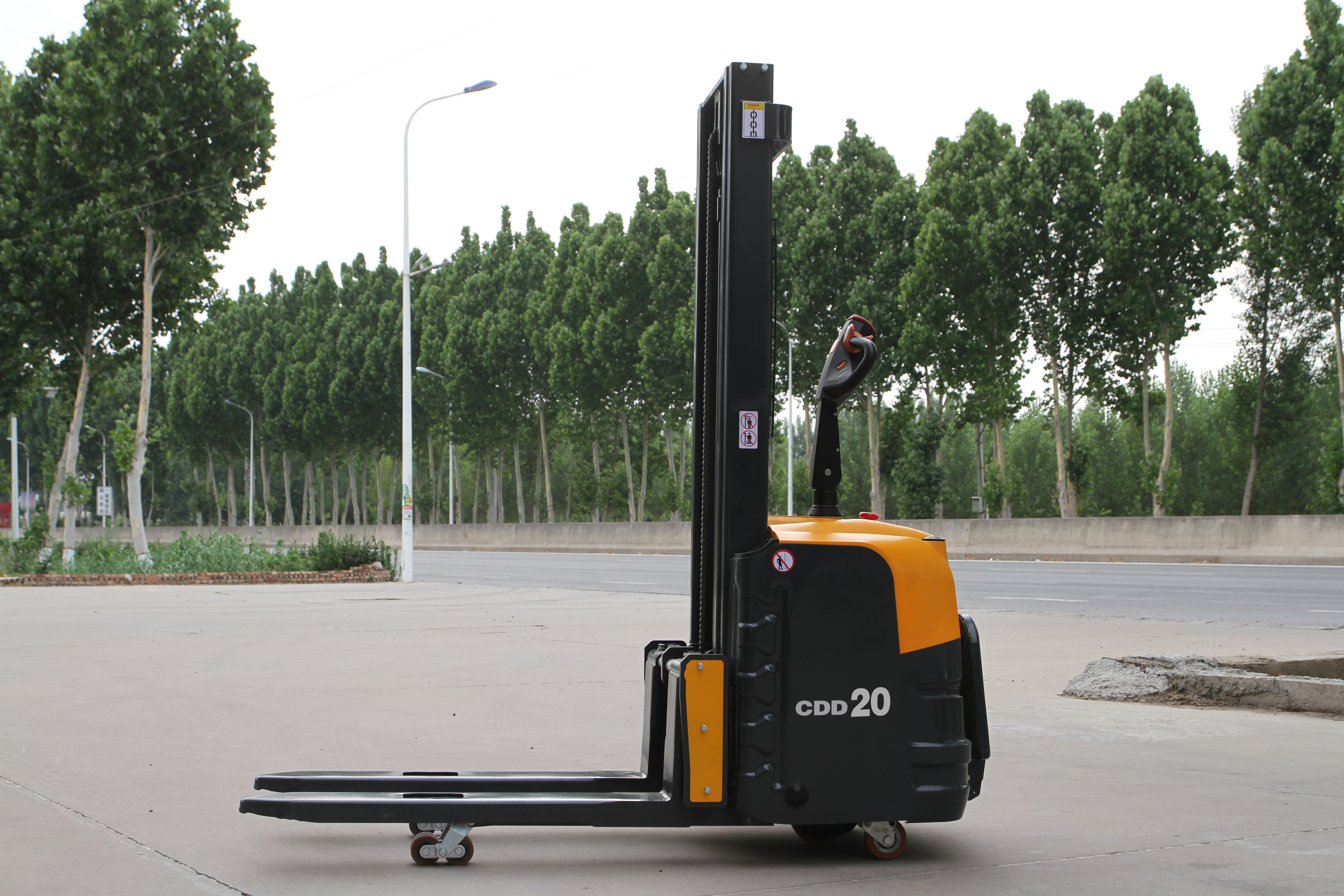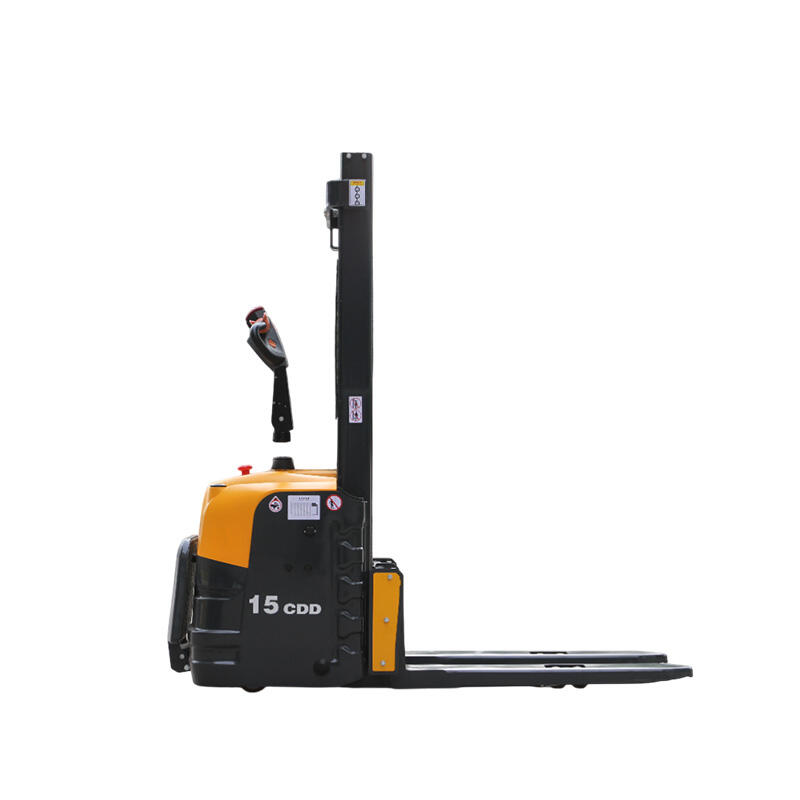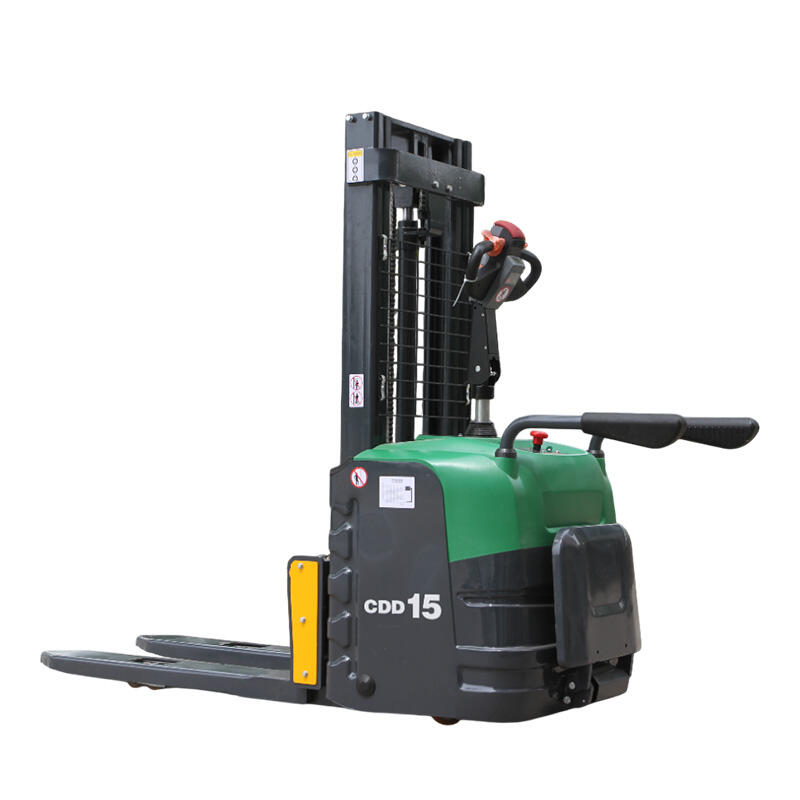An electric power stacker is an advanced material handling equipment that relies solely on electric power for both propulsion and lifting, offering a clean, efficient, and high-performance solution for moving and stacking palletized goods in various industrial and commercial settings. This equipment is designed to eliminate manual effort entirely, leveraging electric motors to drive all functions, making it ideal for warehouses, distribution centers, retail facilities, and manufacturing plants where productivity, sustainability, and operator comfort are key priorities. By combining powerful lifting capabilities with agile movement, an electric power stacker represents a significant advancement over manual or semi-electric alternatives, providing businesses with a tool that can handle high-volume operations while minimizing environmental impact. The core of an electric power stacker’s functionality lies in its dual electric systems: one for propulsion and another for lifting. The propulsion system uses a compact electric motor to drive the stacker’s wheels, allowing for smooth acceleration and deceleration, with speed controls that let operators adjust movement based on the environment—slower in crowded areas and faster in open spaces. This motor is powered by a rechargeable battery, typically lithium-ion, which offers superior energy density, faster charging, and a longer lifespan compared to traditional lead-acid batteries. The lifting system features another electric motor that drives a hydraulic pump or a direct-drive mechanism, raising the forks to heights between 2 meters and 6 meters, with lifting capacities ranging from 1,000 kg to 3,500 kg. This electric lifting ensures precise control, enabling operators to place pallets on high racks with accuracy, even when handling heavy or fragile goods. The integration of these two systems creates a seamless operation where both moving and lifting are effortless, significantly reducing operator fatigue. One of the standout features of an electric power stacker is its environmental friendliness. Unlike fuel-powered equipment such as forklifts, which emit exhaust fumes, electric power stackers produce zero emissions, making them safe for indoor use in enclosed spaces where ventilation is limited, such as warehouses, shopping malls, and food processing facilities. This not only improves air quality but also aligns with global efforts to reduce carbon footprints and meet sustainability regulations, making them a preferred choice for businesses committed to green practices. Additionally, electric power stackers operate quietly, with noise levels typically below 65 decibels, creating a more pleasant work environment and allowing for use during early mornings, evenings, or in noise-sensitive areas adjacent to residential zones or offices. Maneuverability is another key advantage of an electric power stacker, with its compact design and responsive controls enabling navigation through narrow aisles and tight corners. Most models feature a three-wheel configuration, with the rear wheel or wheels capable of swiveling, providing a turning radius as small as 1.5 meters—ideal for warehouses with high-density storage and limited space. The control handle is ergonomically designed, with intuitive buttons for forward/backward movement, lifting, and lowering, allowing operators to maneuver the stacker with precision. Some advanced models include programmable speed limits that adjust based on the lifting height, ensuring stability when moving with elevated loads and preventing accidents in busy areas. Safety is a top priority in the design of an electric power stacker, with multiple features integrated to protect operators, goods, and the surrounding infrastructure. Overload protection systems prevent the stacker from lifting loads exceeding its rated capacity, reducing the risk of tip-overs or structural damage. Emergency stop buttons are prominently located on the control handle and chassis, allowing for immediate shutdown in case of an emergency. Many models include automatic braking, which engages when the operator releases the control handle, preventing unintended movement. The stacker’s low center of gravity and wide base enhance stability, even when lifting heavy loads to maximum heights. Additionally, some models feature proximity sensors that detect obstacles in the stacker’s path and slow down or stop movement, further reducing collision risks. Operator comfort is a key design consideration, with features that make long shifts more manageable. The control handle is often height-adjustable, allowing operators of different sizes to find a comfortable position, while the smooth acceleration and deceleration minimize jolting, reducing physical stress. Many electric power stackers include a fold-down operator platform, enabling operators to stand during longer moves instead of walking alongside, conserving energy and reducing fatigue. The absence of manual pumping eliminates the muscle strain associated with manual stackers, making the equipment accessible to a wider range of operators, including those with physical limitations. The quiet operation also reduces mental fatigue, allowing operators to stay focused throughout the workday. Versatility is a defining characteristic of an electric power stacker, with customizable features that adapt to specific operational needs. Adjustable fork widths accommodate various pallet sizes, from small crates to large industrial pallets, while optional attachments such as side shifters allow for lateral adjustment of the forks, ensuring precise alignment with racks or trucks. Some models offer extendable forks to handle longer pallets or double-stacked loads, increasing flexibility. In cold storage environments, specialized electric power stackers with cold-resistant batteries and components can operate reliably at temperatures as low as -30°C, making them suitable for frozen food warehouses or pharmaceutical storage facilities. For high-throughput operations, models with fast-charging lithium-ion batteries can be recharged during breaks, ensuring continuous operation throughout the shift. Maintenance requirements for an electric power stacker are minimal, contributing to its long-term reliability and low operational costs. Regular maintenance tasks include checking the battery’s charge level and ensuring proper connections, inspecting the lifting mechanism for leaks or wear, and lubricating moving parts such as hinges and rollers. Lithium-ion batteries require no maintenance beyond regular charging, while lead-acid batteries (still used in some models) need occasional water refills. The electric motors and control systems are designed for durability, with fewer moving parts than hydraulic or fuel-powered systems, reducing the risk of breakdowns. Cleaning the stacker regularly to remove dirt and debris helps prevent rust and ensures optimal performance, with most maintenance tasks able to be performed by in-house staff without the need for specialized technicians. Cost-effectiveness is a significant benefit of an electric power stacker, despite its higher initial purchase price compared to manual or semi-electric alternatives. The increased productivity—due to faster movement and lifting speeds—allows operators to handle more loads per shift, reducing labor costs over time. The reduction in workplace injuries lowers medical expenses and workers’ compensation claims, while the low maintenance requirements minimize downtime and repair costs. Lithium-ion batteries, though more expensive upfront, have a longer lifespan (up to 2,000 charge cycles) than lead-acid batteries, reducing replacement costs. Additionally, the energy efficiency of electric motors results in lower operational costs compared to fuel-powered equipment, with electricity being cheaper than gasoline or diesel in most regions. In conclusion, an electric power stacker is a cutting-edge material handling solution that combines efficiency, sustainability, and safety to transform warehouse and logistics operations. Its electric propulsion and lifting systems eliminate manual effort, reduce environmental impact, and enhance productivity, making it an invaluable asset for businesses looking to optimize their material handling processes. With its maneuverability, versatility, and operator-centric design, it is well-suited to a wide range of industries and applications, delivering long-term value through increased throughput, reduced costs, and a safer work environment.


